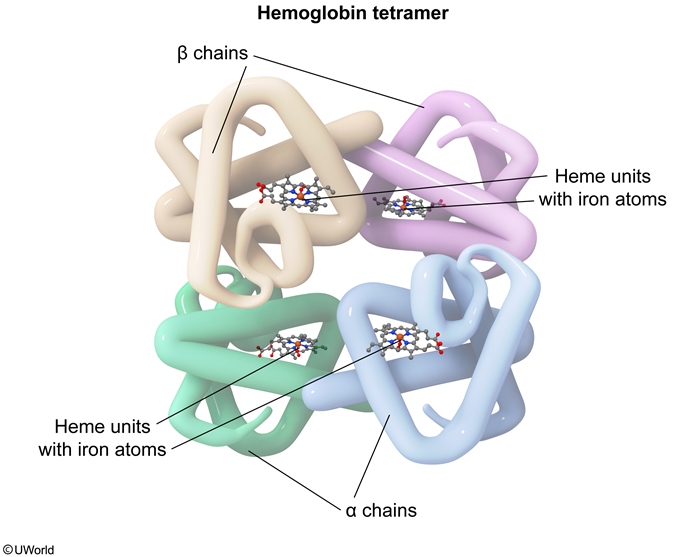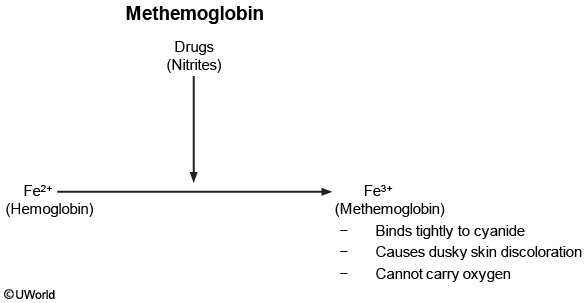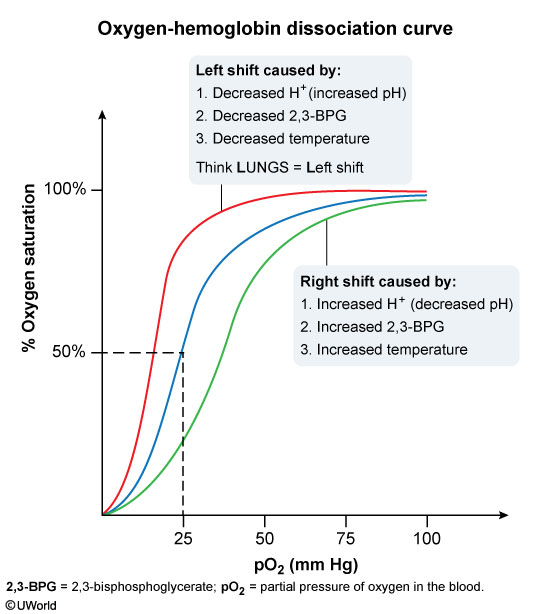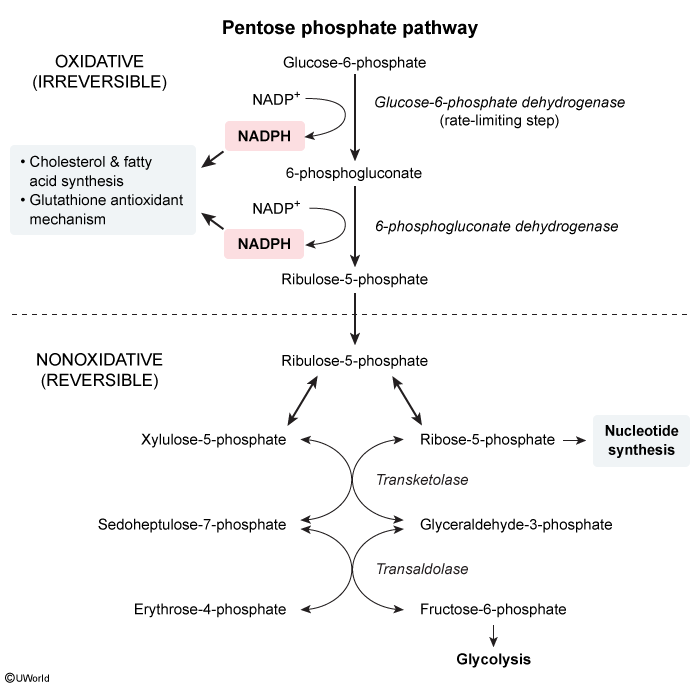Methemoglobinemia
Article Sections
Introduction
Methemoglobinemia is a condition characterized by elevated methemoglobin, a form of hemoglobin that contains iron in the ferric state (Fe³⁺), instead of the normal ferrous state (Fe2+). Ferric iron cannot bind oxygen effectively, resulting in impaired oxygen delivery and tissue hypoxia. Methemoglobinemia can be congenital or acquired.
Pathogenesis
Hemoglobin is a tetramer composed of 4 subunits (Figure 1). Each subunit consists of an iron-containing heme molecule attached to a globin chain. A normal red blood cell (RBC) contains approximately 270 million hemoglobin molecules that transport oxygen to peripheral tissues. Approximately 98% of the oxygen in blood is attached to iron in hemoglobin. The remaining 2% is dissolved in plasma, represented by the partial pressure of oxygen in arterial blood (PaO2).
The iron in hemoglobin is normally in the ferrous (Fe²⁺) state, which is required to bind, transport, and release oxygen. Under physiologic conditions, a fraction of the iron in RBCs transitions between the ferrous (Fe²⁺) and the ferric (Fe³⁺) states through a series of oxidation-reduction reactions (
Continue Learning with UWorld
Get the full Methemoglobinemia article plus rich visuals, real-world cases, and in-depth insights from medical experts, all available through the UWorld Medical Library.
Figures



